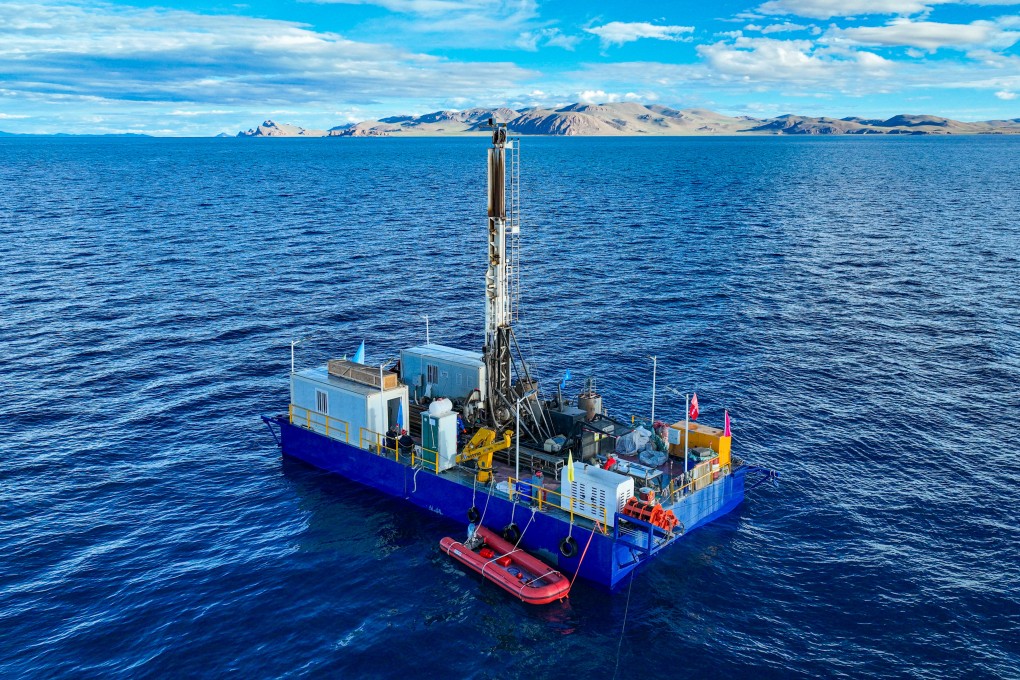Does Tibet’s ‘Heavenly Lake’ hold clues to the future in core samples from ancient past?
- Chinese-led international research team says record-setting drill project at Nam Co could provide ecological information vital to future planning

The team drilled to a depth of 510.2 metres (1,674 feet), well past the previous record of 153.4 metres for the deepest lake drilling in China, state broadcaster CCTV reported on Wednesday.
Over 42 days, the team drilled seven holes at Nam Co, or “Heavenly Lake”, which sits 4,700 metres above sea level, and extracted more than 951 metres of core samples from the bottom of the lake.

Researchers hope Nam Co’s sediment, which is more than 700 metres thick, will shed new light on climate change and the geological evolution of the plateau.
The Nam Co drilling project, which is being conducted through the International Continental Scientific Drilling Programme (ICDP), was carried out at the highest ever altitude for such an endeavour.

The expedition team comprises 70 scientists and drilling technicians from the Institute of Tibetan Plateau Research and the Chinese Academy of Sciences, as well as researchers from Germany, Switzerland, the United Kingdom and other countries.
